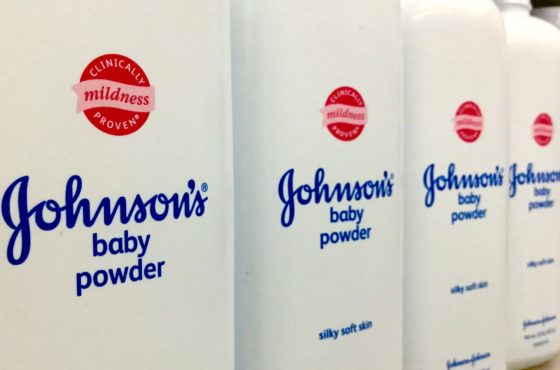Fertilizers are mainly known to be beneficial for the production of crops and for making way to a bountiful harvest. But more people need to pay attention about their potential harmful effects on human health.
Some people may have an inkling about a fertilizer’s harmful effect, but its dangers and detrimental effects can go beyond what someone might expect.
To fully understand the extent of its negative effects, we need to learn first what a chemical fertilizer is and how it works.
Read on to learn more about this substance and its detrimental impacts to the environment and human health.
What is a Chemical Fertilizer For?
A chemical fertilizer is a natural or synthetic substance that is applied to soil for the purpose of supplying nutrients essential to plant growth.
Chemical fertilizers can be categorized into two types, namely organic and chemical. Here’s how they differ: an organic fertilizer come from organic sources including plants and animal manure. These fertilizers are more eco-friendly but they are not ideal for commercial purposes since they tend to be expensive and have lower productivity.
However, there is an existing argument about organic food and its safety. It is still a widely debated topic if organic food is really safer than its inorganic counterpart.
A chemical fertilizer, on the other hand, come from inorganic sources which undergo chemical processes, and they tend to be cheaper. They also provide much greater crop yield as compared to the organic type. However, these chemical fertilizers have a widespread impact on human health.
Sounds familiar?
Maybe that’s because chemical fertilizers are not the only chemicals from the agricultural sector that is controversial for its burdens on the environment and human health.
This potentially harmful chemical is called a pesticide. A pesticide, much like a chemical fertilizer, has also been making the rounds for its alleged short and long-term harmful effects to humans.
Risks and Dangers
Chemical pesticides have been known for their ability to cause a wide array of negative health effects to humans. Pesticide exposure, for instance, can cause adverse health effects on humans, especially unsafe pesticide levels.
In fact, a certain pesticide is being the target of lawsuits today in the United States. It is a pesticide sold under the brand name Paraquat.
According to recently filed Paraquat lawsuits, the pesticide and its allegedly toxic chemicals can cause lung scarring, lung damage, kidney failure, liver failure, heart failure, and pesticide poisoning, among others.
Several studies have also shown that the Paraquat herbicide can increase one’s risk of having Parkinson’s disease. Farmer, agricultural workers, and pesticide applicators are the ones who are at the highest risk of suffering adverse health effects from pesticide exposure.
Excessive pesticide levels are just as dangerous for humans as the use of excessive quantities of fertilizers. These chemicals have also been linked to a number of detrimental impacts not only to the ecosystem, but also to human health.
How Do Pesticides Affect Human Health?
Fertilizers are a combination of potentially harmful chemicals which can be absorbed by plants and possibly enter the food chain through cereals, vegetables and can even make its way through our drinking water.
Aside from those, the direct and indirect effects of chemical fertilizers on human health range from minor adverse health effects to some major health risks.
Food crops that are grown using inorganic fertilizer are known to be less nutiritious, since it mainly targets the fast growth of plants rather than its nutritional value.
Additionally, exposure to ammonium nitrate, which is widely used in chemical fertilizers, can cause eye and skin irritation, which can lead to a burning sensation. Inhalation of this chemical compound can also cause irritation of the nose, throat, and lungs.
Chemical fertilizers can cause problems with the heavy metals that can be found in it. These include Lead, Mercury, Cadmium, and Uranium, which can have a negative impact on the kidneys, liver, and lungs. These heavy metals are also associated with other human health hazards.
A Plethora of Health Effects
One of the major health risks caused by chemical fertilizers can possibly happen through the plant macronutrients that it contains, including nitrogen, potassium, and phosphorus. The problem with chemical fertilizers is that it can infiltrate the soil, and can make its way to the groundwater and even surface water like rivers and lakes through runoffs, which can result in contamination.
Nitrogen can remain in the water for several years, which can contain excessive levels of nirates and nitrites. And nitrateand nitrite-contaminated water can cause a blood disorder called methemoglobinemia, also known as the “Blue Baby Syndrome.”
This condition is described as the abnormal production of methemoglobin, which is a form of hemoglobin. Studies say that it results from feeding infants with baby formula using nitrate-contaminated water. When this happens, the infant literally turns blue and may eventually suffer from coma and even death.
A recent study has also found an association between increased amounts of nitrates in the environment and our food with increased deaths from Alzheimer’s disease and diabetes mellitus.
This is due to human exposure from a chemical reaction between nitrites, which are heavily used in fertilizers, and secondary amines or proteins, which then causes DNA damage, lipid peroxidation, and oxidative stress, which can all result in increased cellular degeneration and even death.
Another major health risk that comes with the excessive use of the synthetic fertilizer is that it may increase the risk of developing cancer. A 1973 study links high levels of sodium nitrate in groundwater with gastric cancer. Synthetic fertilizers can also potentially increase one’s risk of dying from different types of cancer for up to six times. These include prostate cancer, brain cancer, non-Hodgkin’s lymphoma, and leukemia.
What are the Effects of Fertilizers on the Environment?
One of the harmful effects of fertilizers on the environment can be caused by eutrophication, a process by which a body of water gets an excess amount of nutrient like nitrogen and phosphorus, which mainly happens because of human activities that cause these nutrients to be pushed into the ocean.
This proces creates a “dead zone.” The nturients encourage the growth of excessive amounts of aquatic plants, to the extent that when they die, the process of decomposition consumes oxygen that fish and other marine life need to survive.
Therefore, because most marine life either dies or leave that area because of less oxygen, experts call it a “dead zone”.
Moreover, a study found that the excessive use of inorganic fertilizers around the world is linked to the accumulation of contaminants such as cadmium, arsenic, lead, mercury, and fluorine in the agricultural soil.
In fact, in the United States, a set of studies done by the U.S. Geological Survey (USGS) on the aquatic life on major river basins in the country found that 90 percent of water and fish samples from streams contained one, or more often, several pesticides.
What’s the Takeaway?
Chemical fertilizers may be beneficial for plant growth, but they can also potentially cause adverse health effects in humans and also have a detrimental impact in the environment.
Whether you are using a farm or lawn fertilizer, applying more than what is suggested or needed by a plant may help them grow fast, but it can have negative consequences to the ecosystem and the people around you.





